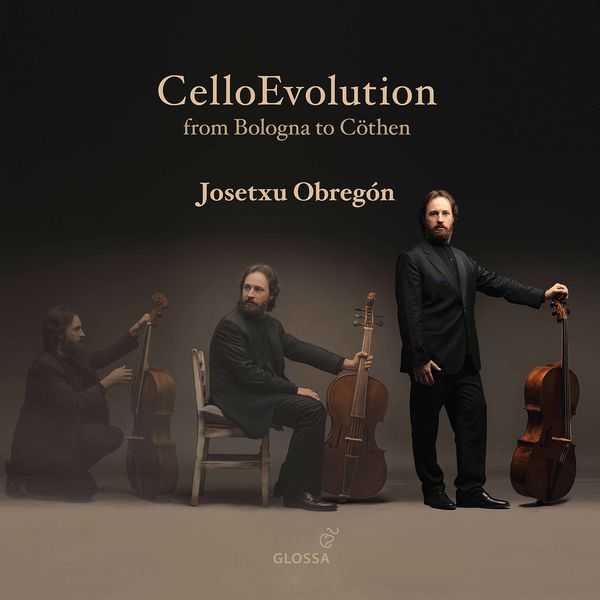

Composer: Johann Sebastian Bach, Giuseppe Colombi, Domenico Gabrielli, Domenico Galli, Francesco Paolo Supriani, Giovanni Battista Vitali
Performer: Josetxu Obregón
Format: FLAC (tracks)
Label: Glossa
Catalogue: GCD923109
Release: 2022
Size: 0.98 GB
Recovery: +3%
Scan: yes
Bach: Cello Suite No. 2 in D minor, BWV1008
01. I. Prélude
Galli: Trattenimento musicale sopra il violoncello
02. Sonata IX
Dall’Abaco: 11 Capricci for Cello
03. No. 4 in D Minor
Bach: Cello Suite No. 6 in D major, BWV1012
04. II. Allemande
Gabrielli: Ricercari, canone e sonate per violoncello (Excerpts)
05. No. 6, Ricercar sesto
06. No. 1, Ricercar primo
Bach: Cello Suite No. 1 in G major, BWV1007
07. III. Courante
08. Ruvo: Romanella No. 6 in D Minor
09. Ruvo: Romanella No. 7 in D Major
Bach: Cello Suite No. 5 in C minor, BWV1011
10. IV. Sarabande
Supriani: Principij da imparare à suonare il violoncello e con 12 Toccate à solo (Excerpts)
11. Toccata V
12. Toccata X
Bach: Cello Suite No. 4 in E flat major, BWV1010
13. V. Bourrées I & II
Vitali: Partite sopra diverse sonate
14. No. 8, Capritio
Colombi: Varie partire di Barabani, Ruggeri e Scordature a violino solo o con basso
15. Gigue
Bach: Cello Suite No. 3 in C major, BWV1009
16. VII. Gigue
What was the first composition ever written for solo violoncello? What was composed before Bach created his extraordinary suites for solo cello?
These questions drove the cellist Josetxu Obregon to devote himself to the beginnings of solo literature for his instrument.
These beginnings can be found in the city of Bologna, which, with its brilliant Capella Musicale and the Accademia Filarmonica, made a decisive contribution to the development of the violin and the cello.
Obregon presents two ricercari by Domenico Gabrielli from 1688 as the first specific works for unaccompanied solo cello. Further stations on the way from Bologna to Cothen to the climax of this genre with Bach’s six suites are compositions by Vitali, Galli, de Ruvo, Dall’ Abaco, Supriano and Colombi.
Bach’s works are also presented by Obregon, but in an unusual way – he takes a dance movement from each of Bach’s suites and then places them – as a comparison of styles – between the works from his Italian anthology.



